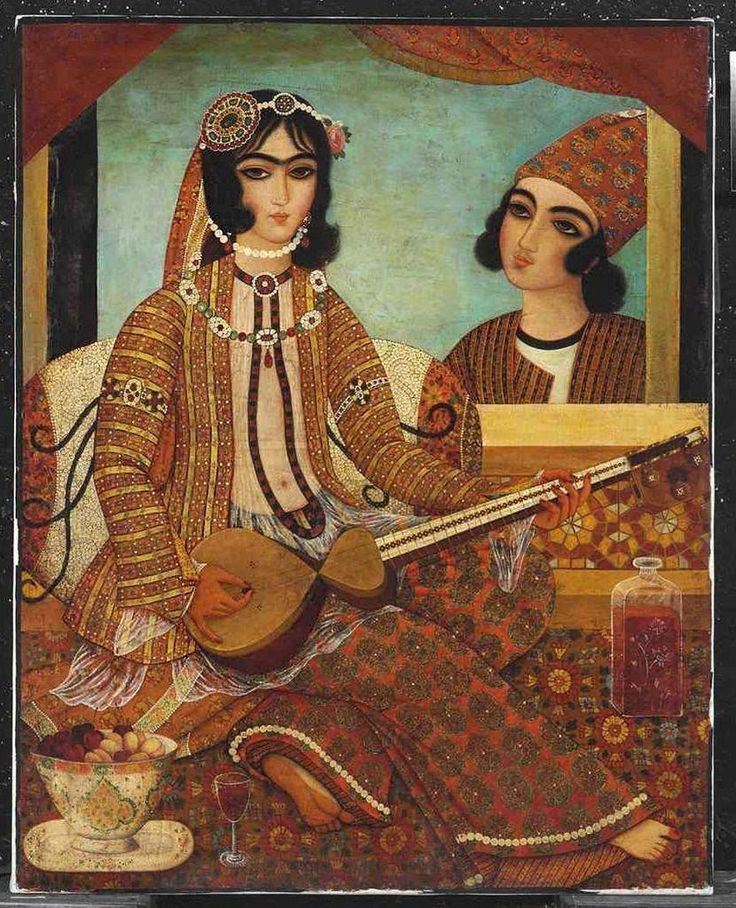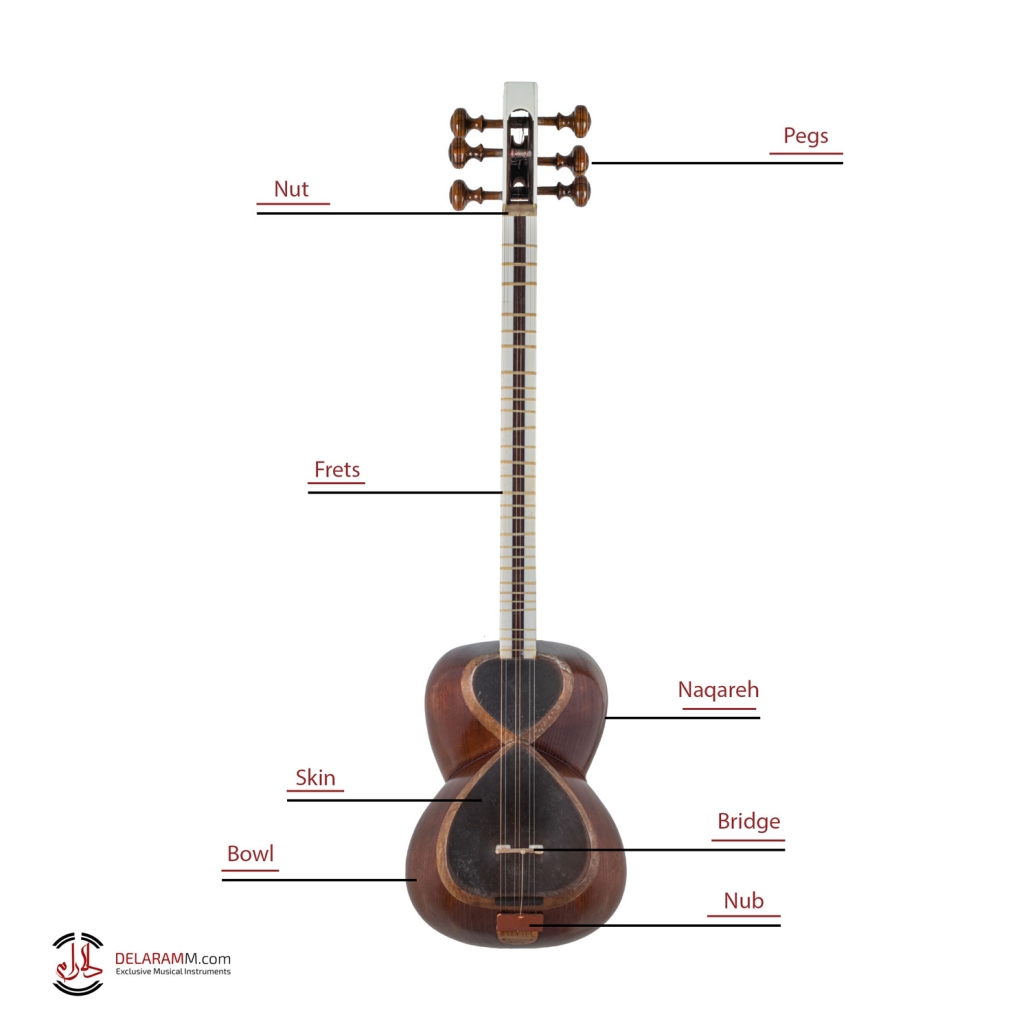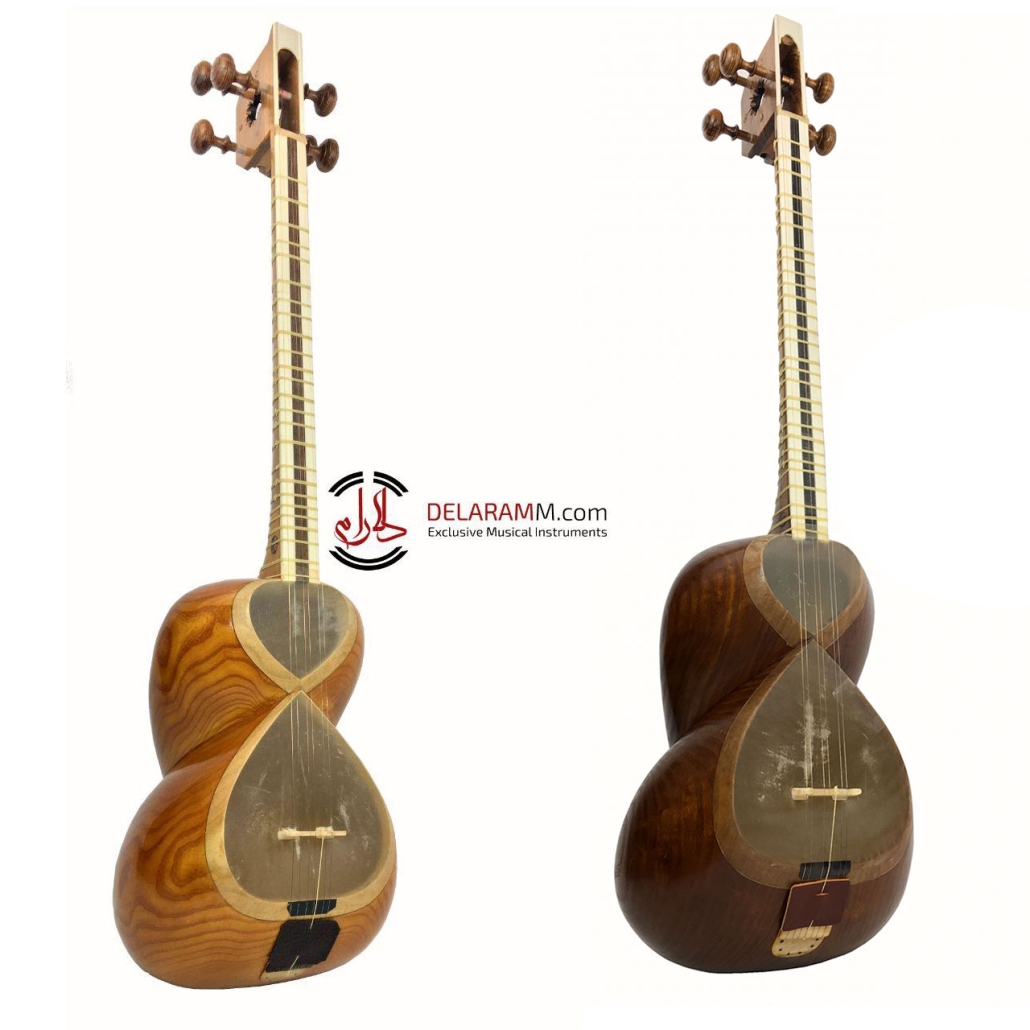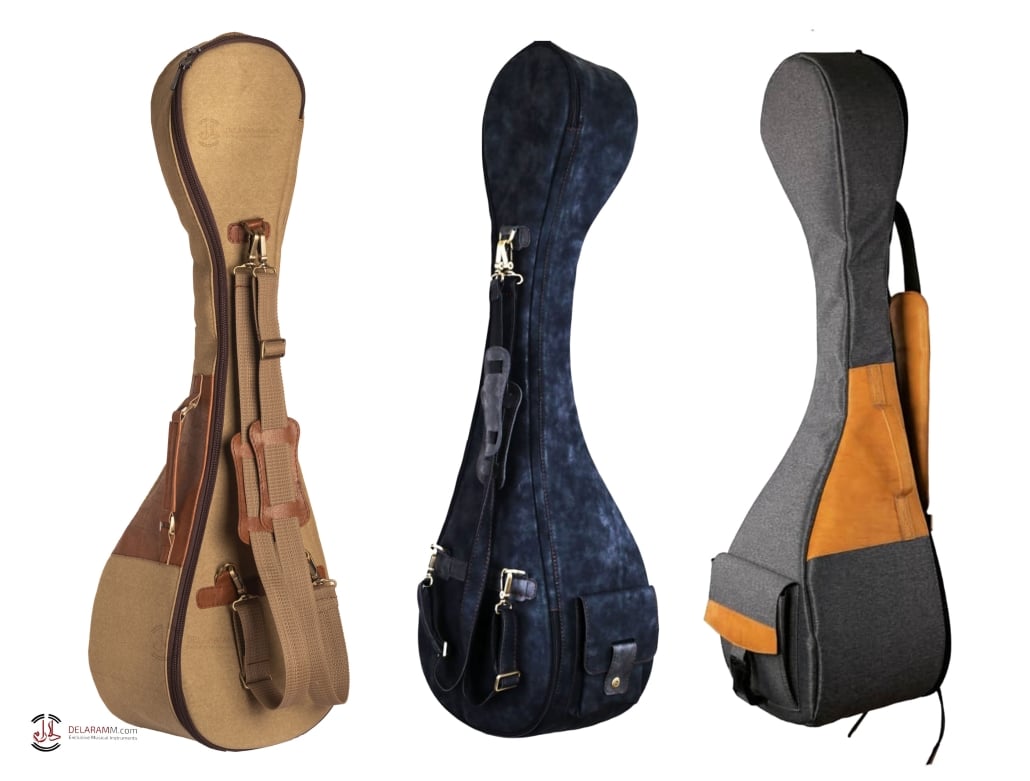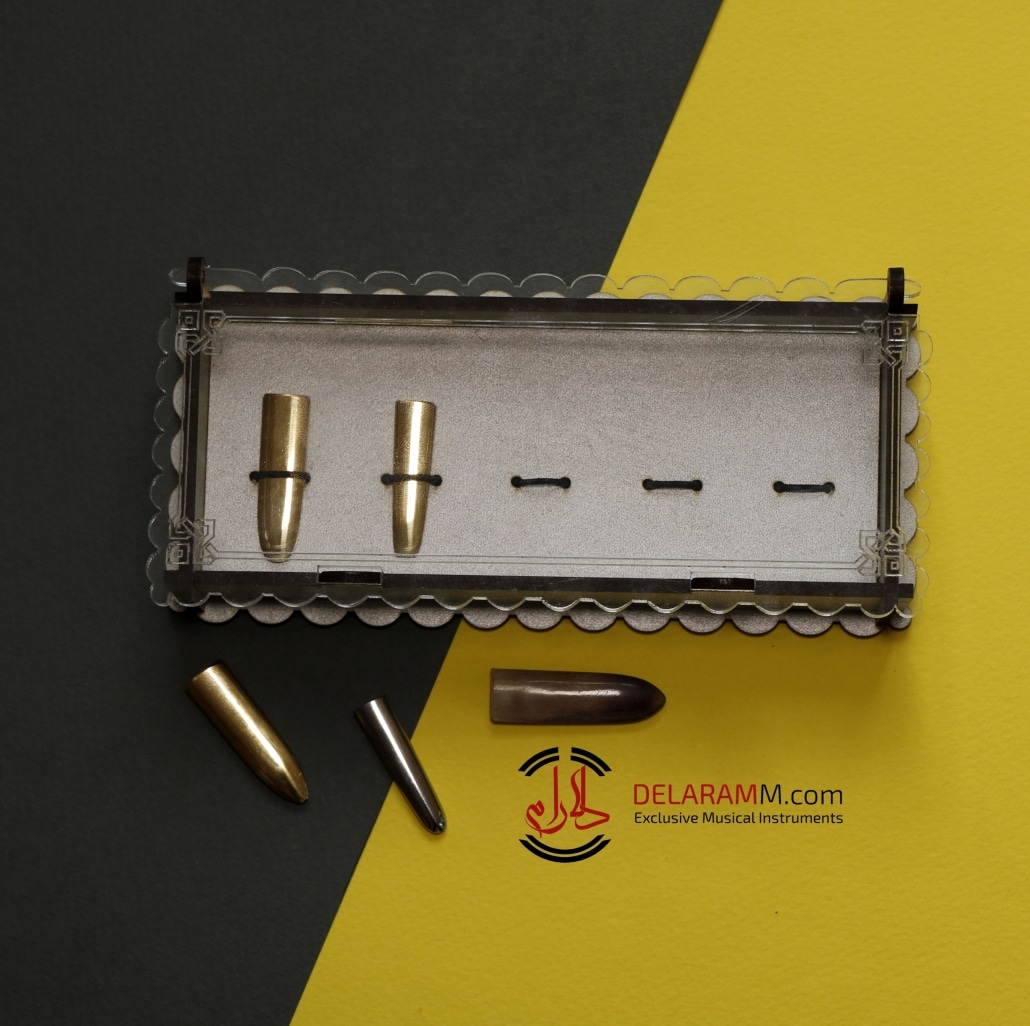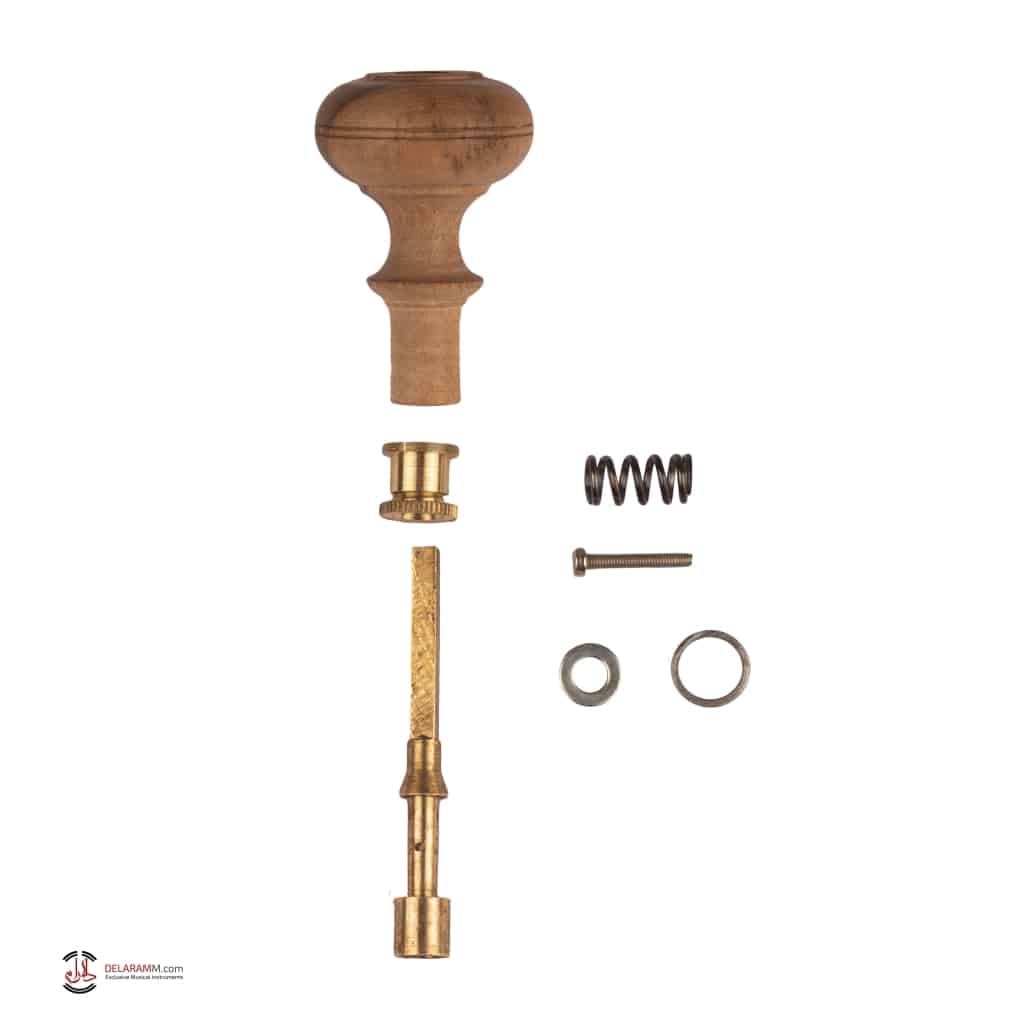An Ultimate Buying Guide for Persian Tar
The Persian Tar
Have you ever marveled at the beautiful sounds of the Persian Tar? This blog will delve into the intricacies of Tar types, materials used in Tar construction, and other key features you must consider when purchasing this instrument. We aim to provide practical advice about what to look for in a Tar, helping you to find the perfect option to suit your musical needs.
Importance of choosing the right Persian Tar instrument
Choosing the right Persian Tar is crucial. The Tar’s unique characteristics – from its double-chest body to the goat skin membrane – can significantly impact the pitch, harmony, and overall musical experience. Our guide aims to provide essential knowledge so you can make an informed decision when buying your Tar.
Understanding the Persian Tar
The journey towards purchasing a Persian Tar, an extraordinary instrument steeped in history and culture, is an exciting one. Before we delve into the buying process, it’s essential to understand the ins and outs of the Persian Tar.
Brief History and Significance of the Persian Tar
In Persian, the word “Tar” translates to “string,” and a Persian Tar is essentially a musical instrument with vibrating strings. It’s known as a chordophone because the initial sound is produced by these vibrating strings. This Persian Tar is played using a plectrum to create a tinkling sound. Additionally, it has frets tied on the neck for extra playability.
The Persian Tar is an ancient stringed instrument deeply rooted in Persian culture, tracing its origin to the late 18th century. The Tar symbolizes Persian classical music, greatly revered for its crisp, artful, and versatile sound range.
Key Features and Components of a Tar Instrument
The Persian Tar stands out among other stringed instruments with its central pear-shaped body, long fretted neck, and double-bowl shape. It boasts six steel strings and 22-28 adjustable frets made from gut. What intrigues it is that these components contribute to the instrument’s rich resonance and delicate tonality.
- Body: made from mulberry or walnut
- Neck: made from walnut or other hardwoods
- Strings: usually made from steel
- Frets: made from gut (animal intestine), but sometimes replaced with nylon for durability.
Differentiating between Various Tar Types and Their Characteristics
There are three main types of Tars, each with unique characteristics—the Persian Tar, Azerbaijani Tar, and the Caucasian Tar. While their construction is somewhat similar, clear distinctions lie in their size, the number of strings, and subtle differences in sound. The Persian Tar is the most common type, known for its captivating and richer sound. However, choosing your perfect Tar will largely depend on your preference and musical goal.
Azerbaijani tar
The instrument known as the “Azerbaijani tar,” “Caucasus tar,” or “11 string tar” is a variation of the Iranian Tar. It was developed by Sadigjan around 1870 and has a slightly different shape and more strings. The Azerbaijani tar has an additional bass string on the side, as well as two double resonance strings halfway up the neck. These extra strings run alongside the main strings over the bridge and are fixed to a string-holder and the body’s edge. In total, the Azerbaijani tar has 11 strings and can produce 17 different tones. It is recognized as the national instrument of Azerbaijan.
According to the Encyclopædia Iranica, Azeri art music is also performed in other parts of the Caucasus, particularly among Armenians who have adopted the mugham system and instruments like the kemancha (Kamancheh) and tar.
Factors to Consider Before Buying a Persian Tar
Before you dive headfirst into the world of Persian Tars, there are a few factors you need to consider to ensure you’re investing in the right instrument for you. Keep in mind these crucial points before making the purchase.
Budget Considerations and Price Range
Persian Tars range significantly from under $300 to over $1000. It’s essential to establish a budget that you’re comfortable with before making your decision. Lower-priced Tars might be more suited to beginners, while higher-end models often boast better sound quality and craftsmanship that more experienced players may appreciate.
Skill Level and Experience of the Player
Your level of expertise will greatly influence the type of Tar you should buy. Beginners might opt for simpler models that are easier to learn and handle, while professionals could benefit from more complex pieces, offering a wider range of notes and techniques.
Purpose of Purchasing the Instrument
Are you looking to play the Tar professionally or perhaps use it as a unique decoration for your home? If you plan on playing in concerts or recording, you’ll want an instrument with great sound quality. However, a more affordable model should suffice if it’s for recreational purposes.
Quality and Craftsmanship of the Tar
This is crucial when buying any musical instrument. Look for a Persian Tar made of high-quality materials, meticulously crafted, and sound-tested by professionals. Verify that it resonates well and that the strings, neck, and body don’t have any construction flaws.
- You should keep some standard patterns in mind, like the Shahrokh and Yahya patterns. Make sure the tar bowl is symmetrical and not too heavy or light. You’ll want the body and handle to be made from high-quality wood. Before buying, give everything a good look to ensure no cracks or scratches.
- The quality of the Tar’s sound relies on the quality of the kharak, which is the membrane. Pay attention to what material it’s made of and ensure it’s sourced from animal horn. It should be trimmed properly and according to standards to avoid problems while playing.
- The kharak should be installed on the skin so that the strings and handle aren’t too far apart, known as the “action”. Too much space can make it hard to place your fingers on the strings and mess with the sound.
- Take note of the material and installation of the tar skin. It’s best if it’s made from a thin layer taken from a lamb’s stomach. It should be smooth without any fatty or thick parts. Make sure the skin is authentic and not some substitute like diaphragms.
- Check out the pegs of the tar to see if they’re not decaying and if they rotate smoothly for tuning.
- Give all the frets on all the strings a good check to ensure there aren’t any buzzing or extra sounds.
Availability of Spare Parts and Accessories
Like most string instruments, Tars require regular maintenance, including string replacements and tuning. Make sure spare parts and accessories (such as cases, strings, and picks) are readily available before committing to a particular model.
Traditional Persian Tar
The traditional Persian Tar is the most common Tar played today. Its body is made of mulberry wood, and the face of the instrument is often made from lamb skin. It usually has six strings and is played with a brass plectrum.
The traditional style of playing the Persian tar originated during the Qajar era. In the early 1920s, musicians held the tar against their chests, but as time passed, they started placing it on their legs. This shift affected the playing technique and brought about some changes in the instrument’s structure. Lucky for us, some recordings are still left behind by legendary masters such as Mirza Abdollah and Mirza Hussein Qoli Farahani. These talented composers crafted some truly beautiful pieces that continue to inspire musicians today.
Description and Characteristics
The traditional Tar has three double courses of strings and a mesmerizing, echoing tone that delights the ears. It features an almost heart-shaped body and a long, narrow neck.
Notable Players and Their Preferences
Some renowned players of traditional Persian Tar include Ali-Akbar Shahnazi and Hossein Alizâdeh. They have always preferred the traditional Tar for its distinct, rich tone and expressive, dynamic range.
Materials Used in Tar Construction
When it comes to the construction of the Persian Tar, the materials used play an integral role in determining not only how the instrument looks but also how it sounds and its durability. Each component of the Tar can be made from a myriad of materials, each providing its unique characteristics to the instrument. Let’s delve deeper into the main components and the common materials used:
Soundboard Materials (mulberry, walnut, or other materials)
A Persian tar’s soundboard (or face) is typically made of wood, such as mulberry or walnut. Each type of wood has its unique texture, density, and coloring, which contribute to your Tar’s resonance and overall aesthetic.
Neck and Ribs Materials (walnut, rosewood, or other materials)
Similarly, the neck and ribs materials can vary, with popular options including walnut and rosewood. The nature of these woods provides the right type of sturdiness, a crucial factor for withstanding the tension from the Tar’s strings.
Fretboard Materials (ebony, walnut, or other materials)
The handle of the tar instrument is securely attached to one end of the small bowl and on the opposite end of the tar neck. Made from robust and durable woods like mulberry or walnut, the handle is a cylindrical wooden tube. It measures approximately 50 cm in length and has a diameter of about 4 cm. The area where the fingers rest is smooth and flat, while the back of the handle is semi-circular.
To enhance its visual appeal and protect the wood from potential wear caused by prolonged finger contact, two strips made of bone are affixed to the sides of the smooth finger surface of the handle.
Strings Materials (nylon, steel, or other materials)
Persian tar strings are usually made from bronze and steel. Bronze strings provide a mellow, warm tone, whereas steel strings boast a brighter and more pronounced sound.
Impact of Materials on the Sound and Durability of the Tar
Indeed, your Persian Tar’s sound, durability, and visual appeal highly depend on the materials used in its construction. High-quality woods like ebony, walnut, and rosewood bring out rich, deep tones and ensure the instrument’s longevity. Similarly, the choice of strings dramatically impacts the sound produced – a powerful consideration for anyone investing in Tar. So, always consider the material choice carefully when shopping for Persian Tar.
Choosing the Right Tar for Your Skill Level
Selecting a Persian tar that aligns well with your skill level is crucial for learning and mastering this unique musical instrument. Here are some top-rated tar options for different levels of expertise.
Beginner-friendly Tar options
Beginners should choose a tar that is easy to handle, has a moderate sound level, and is relatively easy to tune. You don’t necessarily need to opt for the highest quality material, as you are still getting the hang of understanding and playing the instrument. Here are a few brands that offer excellent Tars for beginners:
- Masoud Tar
- Shokouhmand Tar
- Delnavaz Tar
Intermediate-level Tar options
A higher-quality tar could be a beneficial investment for intermediate players who understand the basics and want to progress. These tars often have Better Quality and beautiful designs, producing a richer sound.
- Ahmad Kazemi Tar
- Kalhor Tar
Professional-grade Tar options
Professional tars are for those who have mastered the skills and wish to enhance their performance further. High-grade materials, meticulous craftsmanship, and premium sound quality characterize these instruments.
- Mehdi Ali-Yari Tar
- Meysam Ali-Yari Tar
- Reza Ali-Yari Tar
Recommendations for players at different skill levels
Remember, the ultimate goal is cultivating your skill and enjoying playing the Tar. You can consider more expensive, finely crafted options with a richer sound as you advance. But to start, a basic, user-friendly tar is more than enough. Choose wisely and let the music speak for you!
Additional Features and Accessories
When purchasing a Persian tar, you must consider additional features and accessories that will help amplify sound and protect, maintain, and personalize your instrument.
Tar cases and gig bags for protection and convenience
Your Tar is a precious instrument and needs protection, not just from physical damage but also from changes in humidity and temperature, which can affect its sound. Investing in a durable tar case or gig bag is essential. Look for sturdy exterior cases, soft interior lining, and secure fastening methods.
Maintenance and care tools (tar pick, strings, etc.)
Your Tar will require regular maintenance, so you’ll need to equip yourself with the right tools, such as tar picks, strings, and cleaning materials. Tar picks (or mizrab) are used to strum the strings while special tar strings are needed for replacements.
- Mizrab: Pick made from metal or Horn for plucking the strings.
- Strings: Tar strings tend to break occasionally, so keeping a set of replacements nearby is handy.
Optional accessories for personalization and customization
Persian Tar offers some customization options to make your instrument truly yours. These options include changing tuning pegs, installing decorative inlays, and using distinctive materials. Remember that each accessory can change the sound, so choose wisely to find your perfect melody.
Tips for Buying a Persian Tar
To ease your navigation through the vast ocean of Persian Tars available, here are some crucial tips for buying your perfect instrument:
Researching and comparing different brands and models
Start with investigating various brands and models available in the market. Look for the features that suit your requirements and compare prices across different platforms. The internet is a vast resource here. Reviews and ratings from previous buyers can also provide valuable insights into the performance and durability of the Tar.
Trying out the Tar before making a purchase
Friendly advice: never buy a musical instrument without trying it out first! Play different models of Persian Tar at a local music shop. Pay attention to the sound, the feel of the fretboard under your fingers, and the instrument’s weight. All these aspects will contribute to your comfort and ease of playing.
Seeking recommendations from experienced players and experts
Tap into the knowledge of those who have been playing for a while. Their experiences, learning, and preferences can be a valuable guide in choosing your Tar.
- Online forums and communities
- Music classes and workshops
- Professional instructors All of these are excellent avenues to seek advice and guidance about purchasing a Persian Tar.
Understanding the return and warranty policies of the seller
Ensure you’re familiar with the seller’s return policies before finalizing your purchase. Some sellers offer a warranty on musical instruments, including the Persian Tar. Understanding these policies could save future headaches should there be any issues with the Tar’s construction or performance.
Conclusion
This comprehensive buying guide explores many aspects of the Persian Tar, a beautiful and intricate musical instrument. We’ve covered various types of Tar instruments and discussed their distinctive characteristics. We outlined the materials used in tar construction, emphasizing the impact on sound quality and durability. Lastly, we’ve laid out a few key pointers to guide you in finding the right Persian Tar.

